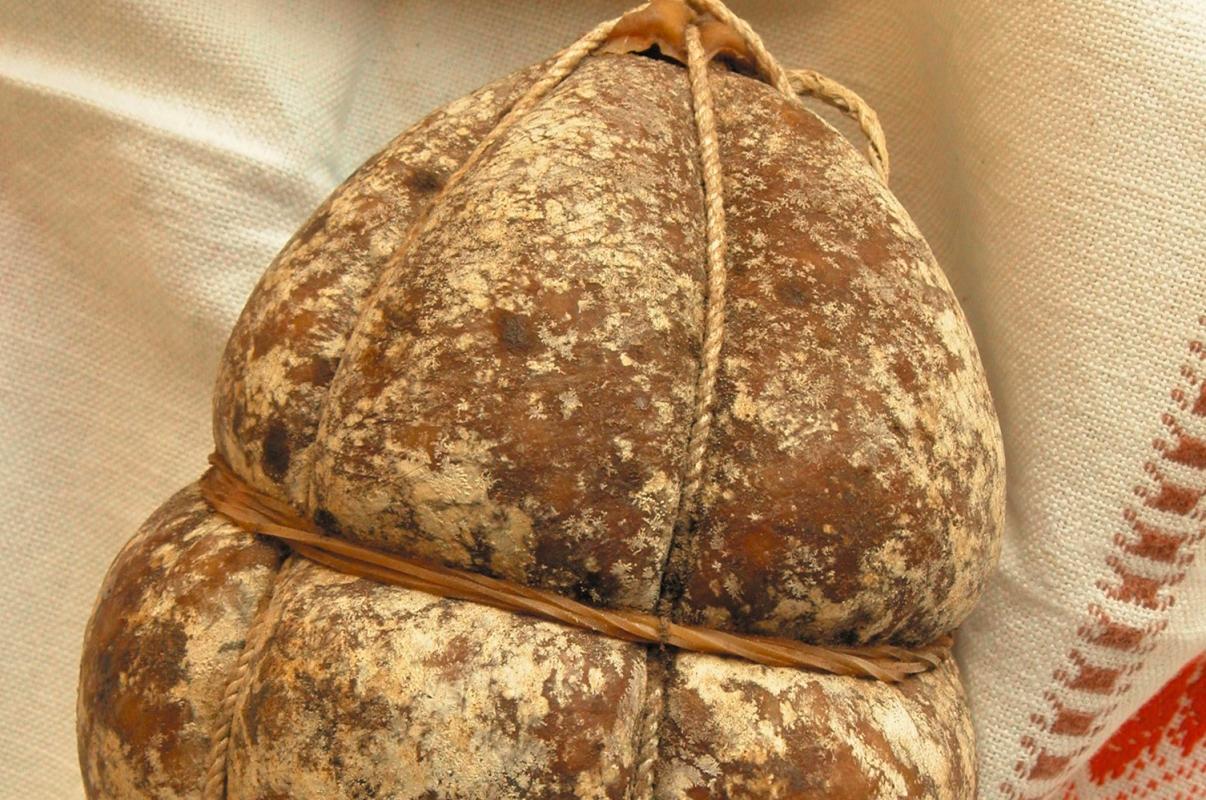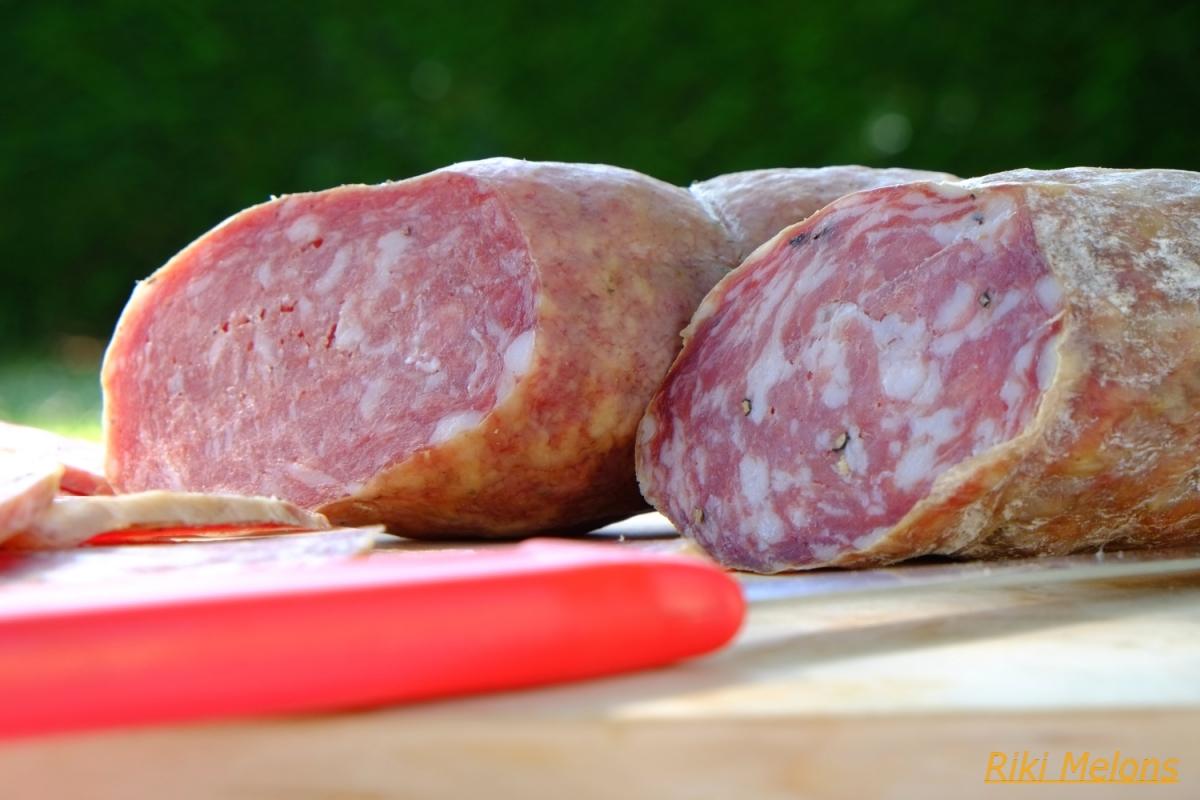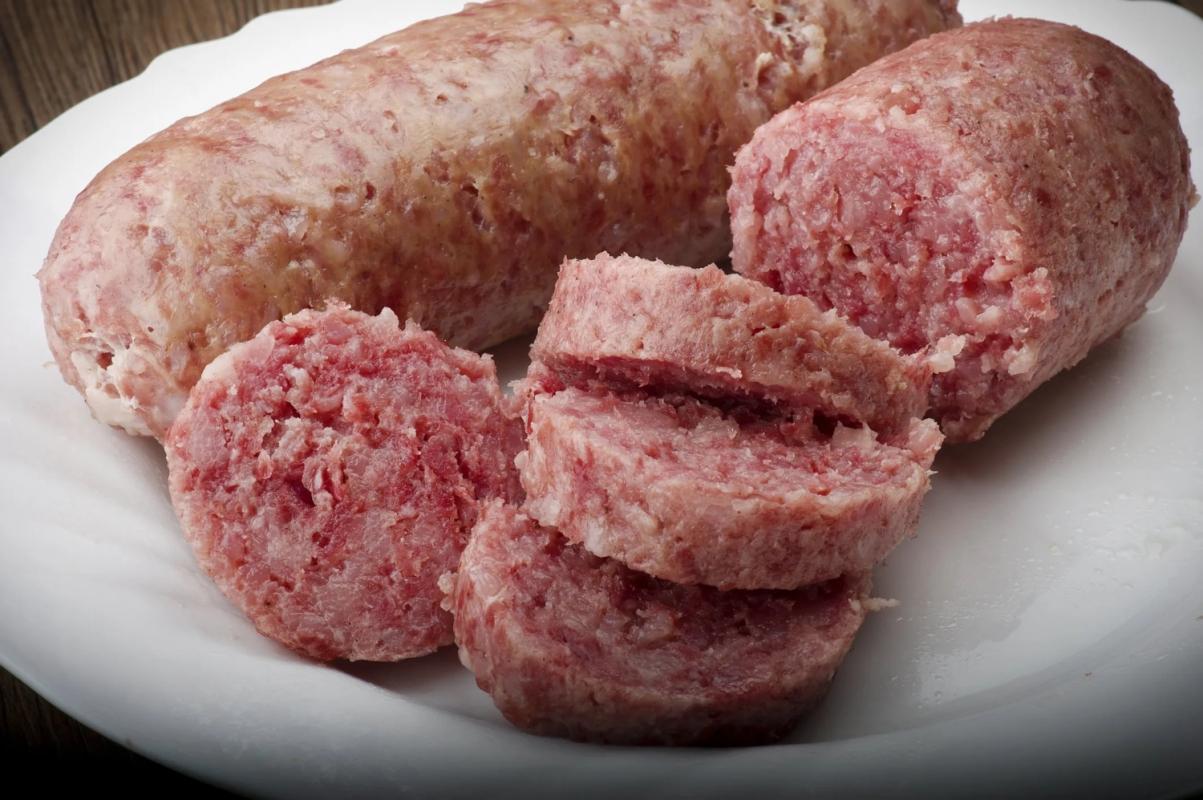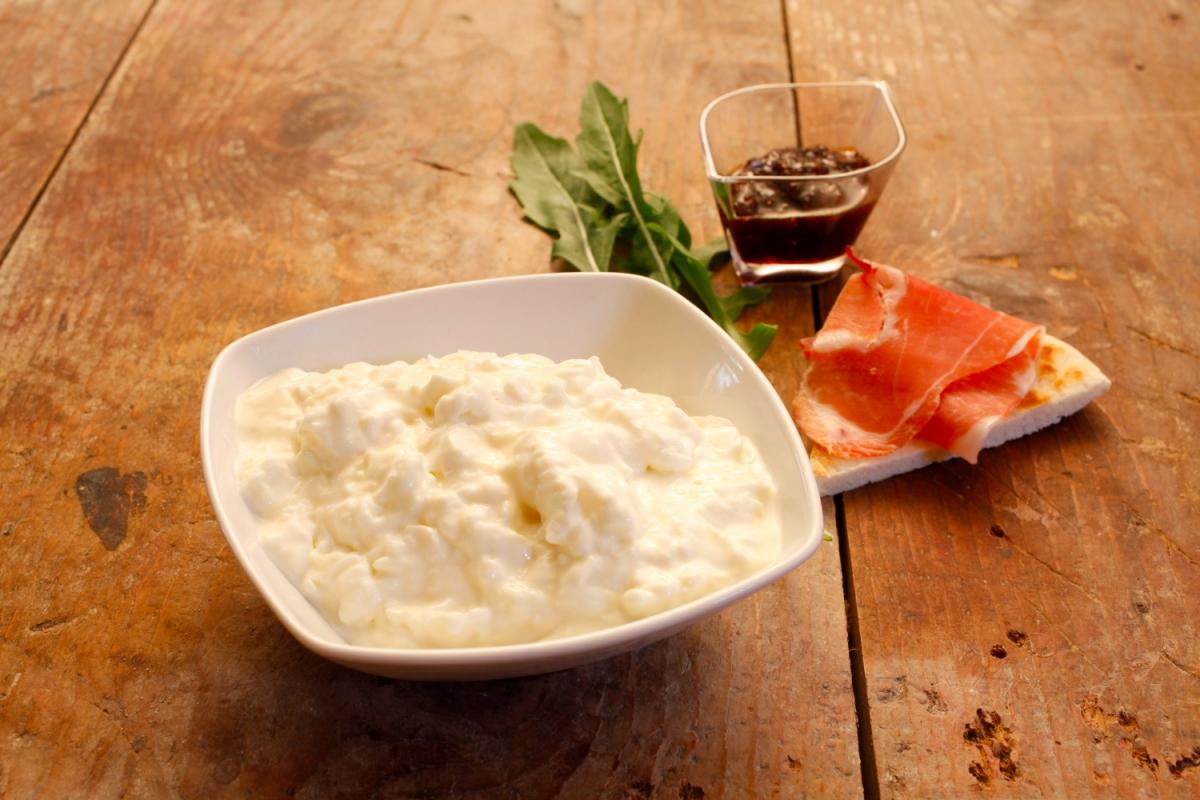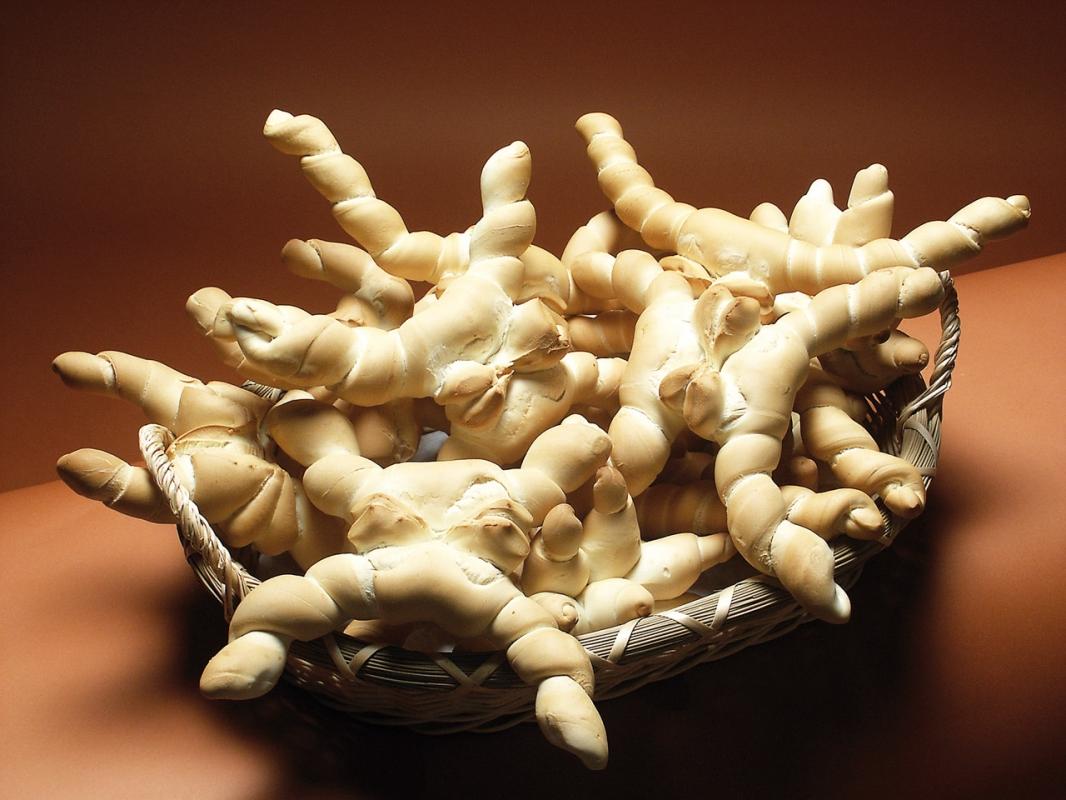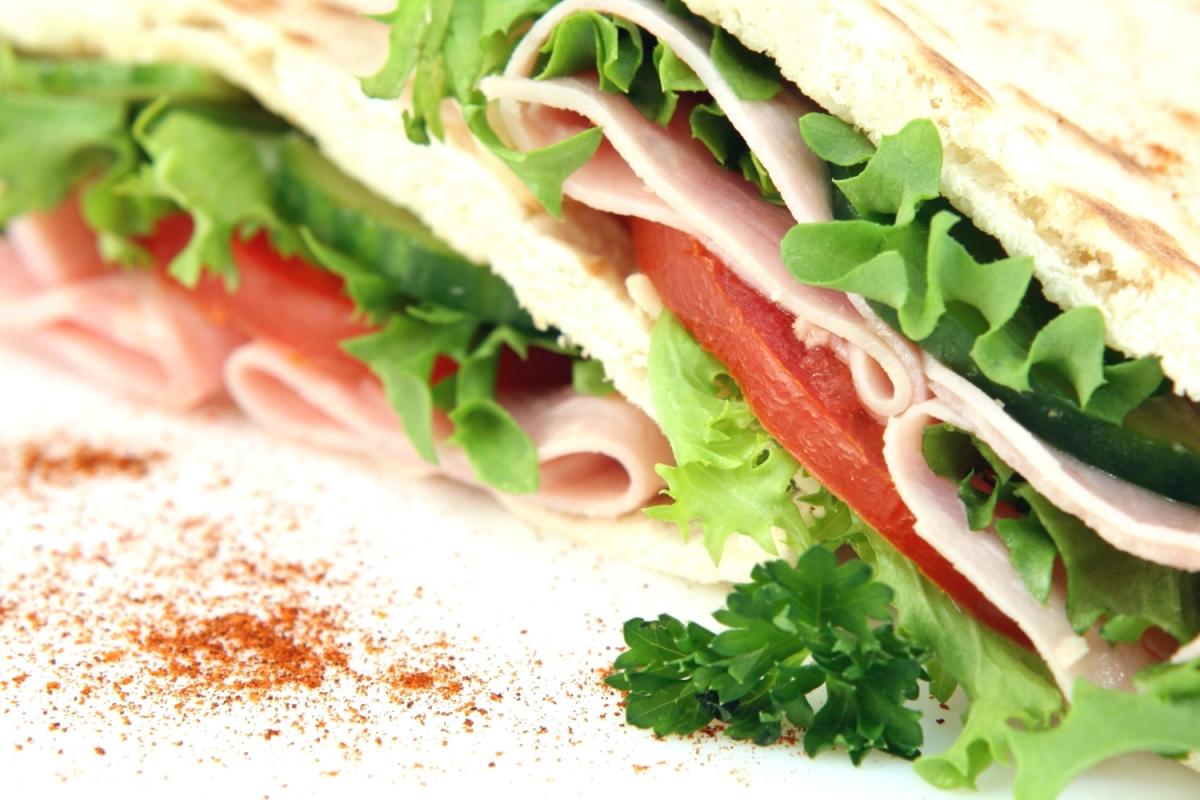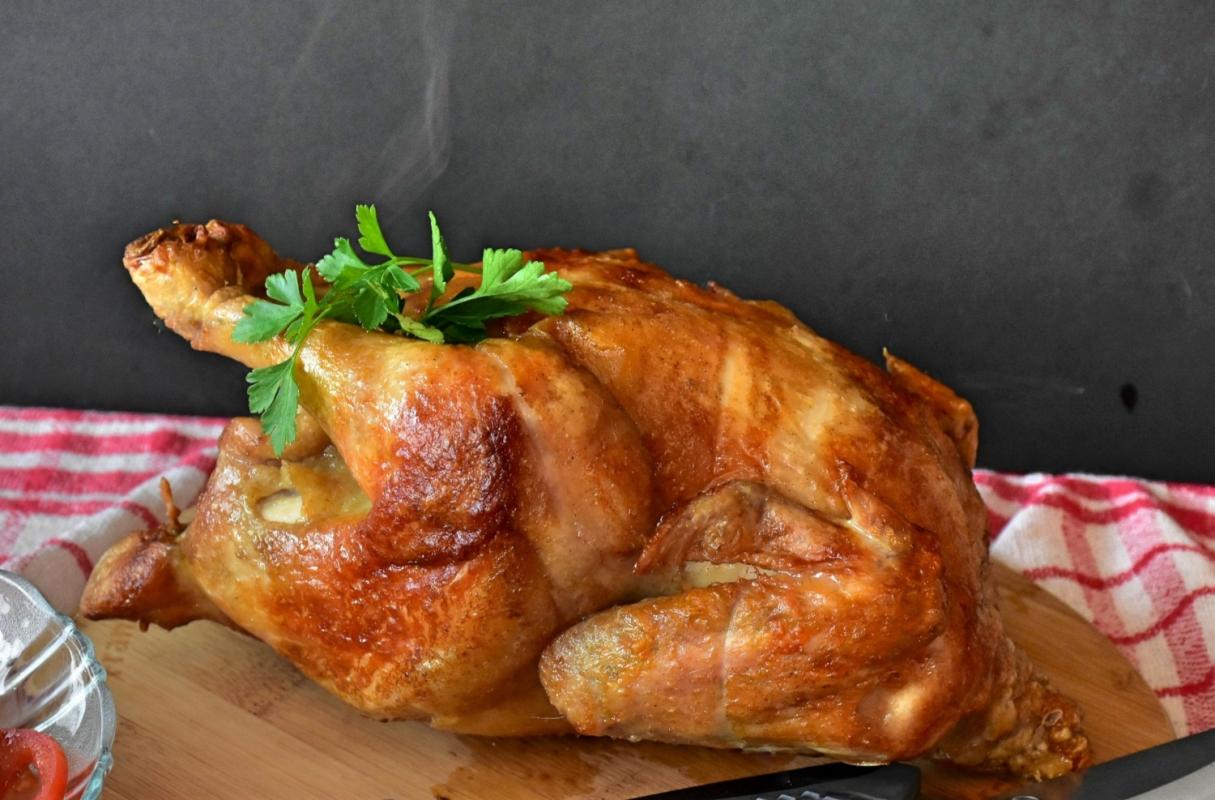PRODUCED BY SKILLED HUMAN HANDS
SALAMA DA SUGO IGP (“SALAMA DA SUGO” PGI)
The "Salama da Sugo" (or "Salamina") is a charcuterie product consisting of a mixture of flavoured pork meats which is then stuffed. After an appropriate period of ageing, the product can be sold either raw or as a cooked product. The area of processing, preparation and packaging of the PGI includes the territory of the province of Ferrara, excluding the municipalities of Goro, Codigoro, Lagosanto and Comacchio. It has a spherical shape, known as a 'melon', tied with string in 6/8 segments with a central bottleneck that gives it its characteristic shape. The "Salama da Sugo" has a strong, decisive flavour that, at the same time, is both elegant and intriguing, making it one of the products of excellence of Italian pork butchery. It is prepared by using meat from “goletta” (dry-cured pork jowl), capocollo (dry-cured pork neck), pancetta (dry-cured pork belly), pork shoulder, tongue and liver (in small quantities) which are minced and to which red wine, salt, black pepper, nutmeg, cinnamon and cloves are added; each charcutier then customises it by adding some other secret ingredients. The origins of the "Salama da sugo" can be traced back to the Renaissance period and the city of Ferrara is the main protagonist. In particular, we find information on the sausage-making technique and the use of red wine in the 1549 recipe books of Cristoforo da Messisbugo, "Scalco" (grand master of ceremonies) at the court of the Este family. It is cooked in a pot for several hours, possibly wrapped in a cloth, immersing it in boiling water, but without letting it touch the bottom, using a wooden spoon or a stick resting on the sides of the pot that will support the "Salama". It is excellent accompanied by mashed potatoes or pumpkin, which go very well with its grainy flesh and its sauce with its intense and slightly spicy flavour.
SALAME ZIA FERRARESE (ZIA FERRARESE SALAMI)
The Zia Ferrarese is one of the traditional and characteristic cold cuts of the Ferrara countryside. It is prepared with pork meat, flavoured with salt, pepper and fresh garlic, which is previously left to macerate in white wine. The addition of this last ingredient, which has always been successfully cultivated in the Ferrara countryside, links this product to the territory of the Este city. In fact, the origins of 'Zia Ferrarese' or 'Zzié Ferrarese' are ancient and mainly date back to the late Renaissance period. It is stuffed into a special rounded casing called the ''Zia'' which, once tied with a fine string, is left to age in cool, damp cellars for several months. The product's ties with the environment are determined by the climatic and territorial characteristics. The study of the soils in the province of Ferrara presents unique aspects since, in the past, a large part of its territory was completely submerged by the sea. These conditions remained almost unchanged until the early 20th century when the Great Ferrara Land Reclamation was carried out. The environmental situation, still characterised by the presence of vast wetlands and the proximity of the river Po, has a considerable influence on the local climate, which is characterised by a constant level of humidity throughout the year. This favours optimum values for temperature, relative humidity and ventilation, which are essential for the proper ageing of these cold cuts.
SALAME ALL’AGLIO FERRARESE (GARLIC SALAMI FROM FERRARA)
Garlic salami, already mentioned in Renaissance texts, is traditionally prepared in the Ferrara area from 30th November, St Andrew's Day, and continues, if the weather is favourable, until the end of January, following the tradition of the 'beccaria', or rather, the home-made killing of pigs and the preparation of salami handed down by local butchers. The use of garlic as a characteristic ingredient in the salami of these places was mentioned in the recipe books of Cristoforo da Messisbugo, steward at the court of the Dukes of Este, and in particular in his recipe book entitled 'Banchetti Compositioni di Vivande et Apparecchio Generale' published in 1549. Garlic salami is made using the noblest parts of the pig, such as the pork loin, shoulder and haunch. Salt and a long list of flavours are then added to the haunch, the composition of which varies from family to family and according to the butcher's inspiration. Curing takes place throughout the winter season in unheated rooms, but with a fair degree of humidity so that mould can form on the outer surface of the salami. They are ground and seasoned with salt, black pepper, nutmeg and red wine. This must have a robust flavour like the "Uva d'Oro" (or Fortana) wine, which is a vine grown in the sands of the Po Delta and inland in Ferrara. The amount of garlic to be added depends on personal taste, on average it is about 2-3 cloves for every 10 kg of minced meat and must be finely chopped almost to a pulp, then incorporated into the mixture. Another widely practised method is to crush the garlic with a wooden tool until it is reduced to a pulp and then to introduce it into a part of the red wine to be used for the curing so that it releases its aroma and is better distributed in the mixture.
BËL-E-CÖT
This traditional cured meat, originally from the Province of Ravenna, takes its name from the fact that in the shops it was sold in large pots "already cooked", hence the name in the local dialect "Bël-e-cöt". According to historical records, it was invented in the town of Russi (Ravenna, Italy), where even today, during the "Fira di Sët Dulur" (Fair of the Seven Sorrows), held in Russi on the third Sunday in September, it is customary to offer this traditional Romagna product. In order to prevent this delicacy from being confused with "cotechino" (natural casing stuffed with a mixture of rind, pork meat, fat, mixed with salt and spices), a set of standards has been drawn up that specifies the type and quantity of products to be used in its preparation, specifying precisely the anatomical parts of the pig that must be used in the preparation of the mixture, which are: the muscles of the head, haunch and shoulder, "goletta" (dry-cured pork jowl) and rind, which gives the product its characteristic stickiness, known in the local dialect as "inciach". These parts are used in the following proportions: 40% of muscle and 30% of "goletta" (dry-cured pork jowl) and rind respectively, to which salt, pepper, natural flavourings and wine are added. The resulting mixture is mixed to amalgamate the various ingredients and then stuffed into natural casings which are perforated to facilitate the outflow of fat and prevent the skin from breaking during cooking, which lasts 3-4 days. There are many recipes for Bël-e-cöt, often very imaginative, but Russi traditionally it is served with a slice of bland bread, mashed potatoes or stewed beans, accompanied by a good glass of "canéna nuova" wine (Refosco, locally called Terrano), even better if it is sparkling.
SQUACQUERONE DI ROMAGNA DOP (SQUACQUERONE CHEESE FROM ROMAGNA PDO)
Squacquerone di Romagna PDO is a soft, creamy, pearl-white cheese made from cow's milk in the provinces of Ravenna, Forlì-Cesena, Rimini, Bologna and part of the province of Ferrara. It is the classic companion of the Piadina Romagnola, in dialect it is called "Squaquaròn" to indicate that, due to the high amount of water it contains and being exceptionally soft, it tends to take the shape of the object in which it is contained and therefore must "squacquerare" (melt). It is composed of about 60% water and has no rind. Popular tradition dates its origin back to the first century AD. It was awarded the PDO mark in July 2012. It is made from milk, salt, calf rennet and milk enzymes that transform the milk, giving it the creaminess that has made it famous and much appreciated also outside the region. The most skilled companies use only "sweet Cervia salt" in the salting process. As mentioned above, it is usually combined with the Piadina Romagnola (Romagnola-style flat bread) and rocket salad, yet connoisseurs know that traditional recipes call for the use of cabbage or Savoy cabbage, sautéed with pancetta. The combination with caramelised figs or bitter orange marmalade is also excellent. It rarely happens, but should there be any left over, it is used as a filling for the first courses of the traditional Romagna-style farmhouse cuisine
COPPIA FERRARESE IGP (COPPIA FERRARESE PGI)
Ciupèta is the typical loaf of bread from Ferrara, renowned for its tastiness and attractive shape. It is also called "noble bread" because at the time of its popularity only wealthy families could afford to have sifted white flour (obtained from stone mills). Legend has it that in 1536, during an important dinner offered by Messer Giglio to the Duke of Ferrara, people began to talk about a twisted, braided loaf of bread. It was created by Cristoforo da Messisbugo, a seneschal or "scalco" (grand master of ceremonies and butler) at the court of the Este family in the Grand Duchy of Ferrara, for the banquets of honour. From the symbolic point of view, the "coppia" also plays a significant role, as the "ciupèta" has the characteristic of having four crispy horns united by a soft central part. Its shape is said to symbolise the union between the two sexes, and so eating it was thought to give strength and fertility. The tradition of "ciupèta" has remained particularly deep-rooted in the area, so much so that it has always been made in Ferrara bakeries and, until the middle of the last century, it was also made and eaten in the small rustic wood-fired ovens of farmhouses in the Ferrara countryside. The secret of its success is due to the quality of the ingredients and water, the warm-humid leavening environment, and the wisdom of a centuries-old tradition of local people and Ferrara bakers, who are able to transform and bring flour and water to life. The ritual of home baking began by first preparing the yeast, working the sourdough, made from a mixture of only water and flour, fermented naturally. The dough was placed in the "spartùra" (the kneading trough), where the leavening process was completed overnight. A small ball of the dough was kept aside for the next day's work to rise the following night, the so-called "madre" (mother = sourdough starter). The women would prepare the dough, passing it through the "gramadora", a primitive wooden machine that 'kneaded' the dough. Then everyone was busy preparing the bread, giving it the traditional shape or indulging in many other suggestive forms such as the "ricciolina" (curl) and many others that have unfortunately been forgotten today. The "mezza-coppia" (half-couple) is called the 'vedova' (widow).
PIADINA ROMAGNOLA IGP (PIADINA ROMAGNOLA PGI)
Traditionally prepared with flour, water and lard, the Piadina Romagnola (Romagna-style flatbread) is one of the most famous products from Romagna and is well-known in Italy and abroad. It has recently been recognised as a PGI product. It is a remarkably simple product that has always fuelled the "good blood rivalry typical of the people of Romagna". In fact, in every village or district in Romagna, from the coast to the Apennines, there are those who claim to have the ownership of the real recipe for Piadina Romagnola "as it used to be made". These are small variations on similar mixtures which sometimes differ only in size, thickness or, in more recent times, in the addition of a little yeast or bicarbonate to make it softer. As you walk along Via Emilia or along the narrow streets in the neighbourhood, you will find lots of kiosks offering the most varied dishes and condiments, and you will find that Piadina also differs in shape and size: from the thicker and softer Piadina from Cesena to the larger and thinner one from Rimini. This does not affect the excellence and fragrance of this street food, which was cooked in the traditional terracotta "testo". You will be fascinated to see the skilled hands of the "azdore" (housewives) still kneading the dough by hand, preparing many small loaves of bread which are then rolled out with a rolling pin. It is not by chance that Giovanni Pascoli called it the "national food of the Romagna people". There are many combinations of fillings, from the classic "Squacquerone" cheese and rocket salad, to Mora Romagnola ham or roast suckling pig, and in the seaside areas, oily fish such as "Saraghina" (sprat) served with shallots or fresh onions.
POLLO ROMAGNOLO (ROMAGNOLA CHICKEN)
The Romagnola chicken is a native breed that was once widespread throughout the Romagna region. It is a very hardy, rustic animal with a tendency to fly, which is why it has always been reared outdoors, often found roaming around the farmyards of country houses and sleeping perched on tree branches. The first documents mentioning the Romagnola chicken date back to the end of the 19th century. It is a breed characterised by its multicoloured livery. It is a small-medium sized animal with a slow growth rate, the male reaching 2.5 kg and the female 2 kg in about 8 months: too long for the rhythms of modern intensive farming, which is probably one of the main reasons why this breed has been discontinued. The meat is firm and very tasty. It is commonly found in the area including Romagna and part of Emilia with the provinces of Ravenna, Forlì-Cesena, Rimini and Bologna. The livery is quite varied, as shown also by the period photos, but it can be assumed that the silver coat was common, the grey " black-flecked silver", the reddish-gold "black-flecked gold", white and partridge varieties. In the countryside of the Romagna region, when at daybreak you can hear the cockerel crowing, you can find these wonderful animals roaming in the farmyards, you can accompany the "Azdore" (housewives) to the chicken coop to collect fresh eggs or you can taste, on feast days, the excellent meat of these animals, skilfully prepared by the local people, having the opportunity to enjoy unique aromas and flavours, combined with a good glass of Sangiovese di Romagna wine.



